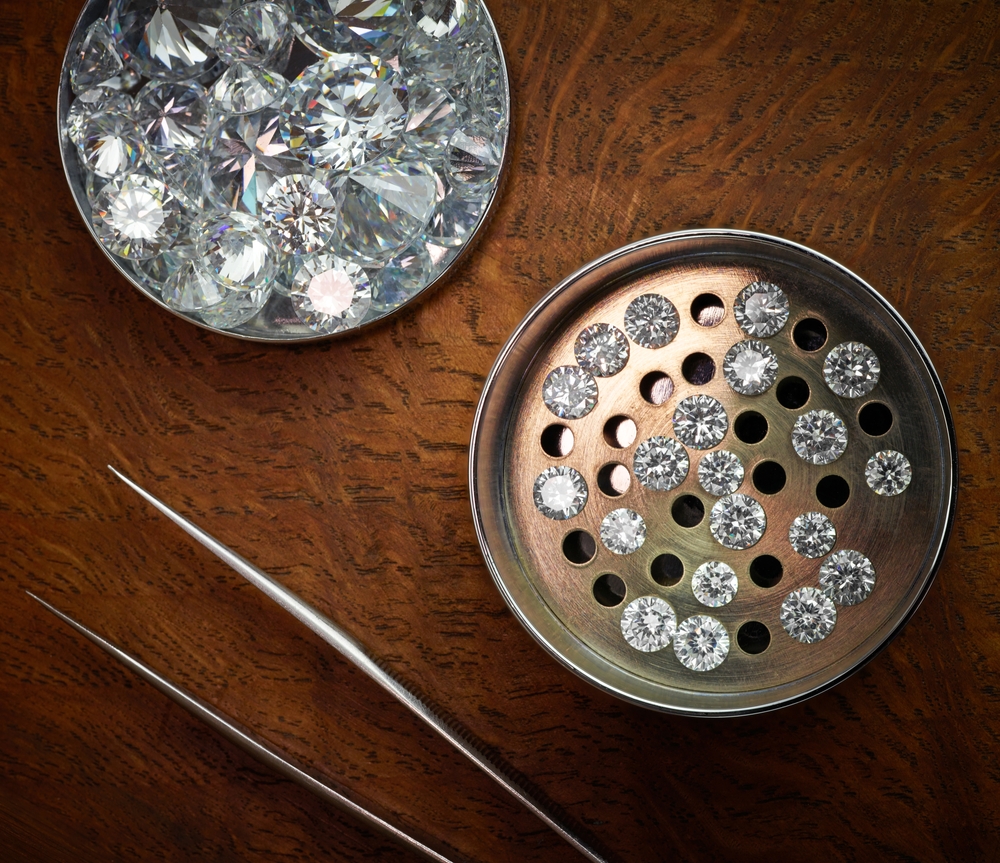Entering the realm of gemstones brings intrigue and complexity; one challenge is distinguishing between synthetic diamonds and look-alike gemstones. Both present ethical and cost-effective options compared to their mined counterparts, yet knowing their unique features is vital. This guide will help you with the knowledge to differentiate between genuine synthetic diamonds and their imitations, boosting your assurance in your fine jewelry choices.

Distinguishing by Composition and Manufacturing:
Manufactured diamonds are identical to the real deal in terms of structure, chemistry, and optics, due to being cultivated in advanced laboratory conditions. On the other hand, diamond stand-ins such as cubic zirconia or moissanite are entirely separate materials. These substitutes can resemble diamonds visually, but falter in matching the specific hardness, refractive qualities, and composition of actual diamonds.
Spotting Visual Variations:
With careful examination, it’s often possible to identify dissimilarities. For example, moissanite typically shows a more vibrant light scattering, often described as a “rainbow effect,” whereas cubic zirconia can lack luster or appear somewhat blurry because it doesn’t bend light with the same precision as diamonds. In contrast, laboratory-created diamonds display identical luster and sparkle to their natural counterparts, as they are, in essence, true diamonds.
Assessing Hardness and Permanence:
The famous resilience of diamonds is reflected in their perfect 10 rating on the Mohs hardness scale. This characteristic is shared by both synthetically created and natural diamonds, unlike diamond substitutes which are markedly softer. Over time, alternatives like cubic zirconia might accrue scratches and diminish in sheen, but lab diamonds retain their radiance perpetually.
Expert Evaluation and Verification:
For those seeking certainty, obtaining a professional assessment is the most reliable approach. Certified gemologists utilize specialized examination techniques beyond what the unaided eye or simple apparatus can detect. These professionals also reference certificates that confirm the synthetic diamond’s provenance and attributes, in contrast to imitations, which seldom accompany such detailed paperwork.
Contrasting Pricing:
Typically, diamond imitations have a much lower price point compared to synthetic diamonds. An excessively low price might be an indicator of an imitation. Being aware of the current market value for both lab-created diamonds and their earth-mined equivalents, as well as their simulants, can give you insight into what you’re acquiring.
Understanding the subtle distinctions between lab-created diamonds and their simulated counterparts highlights the advantages of being an informed consumer. Whether it’s the superior durability and genuine nature of diamonds that you seek, or the cost-friendliness of imitations for style purposes, knowing the differences ensures you’ll be content with your choice. It’s worth remembering that the true value of a diamond—whether lab-grown or naturally sourced—is not just in its external appeal but in the assurance and joy it brings to its wearer.







